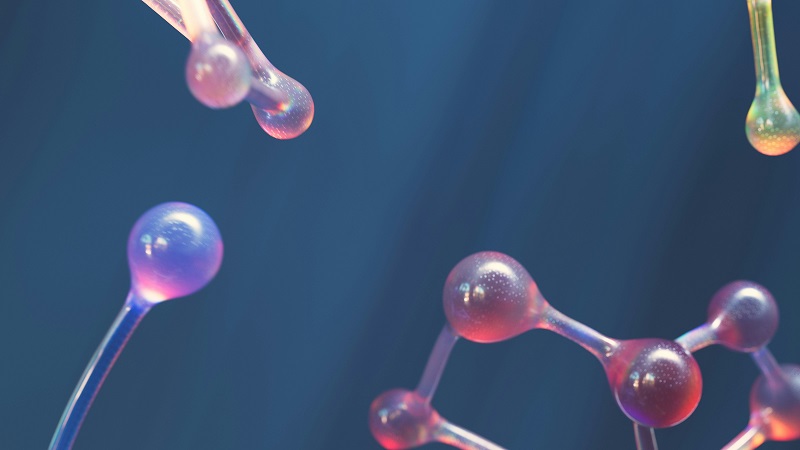Creative Biostructure, a leading provider of structural biology tools and services, today announced the launch of its super-resolution localization microscopy service. This cutting-edge technique allows researchers to visualize biological structures and systems at the nanoscale, far beyond the resolution limits of traditional light microscopy.
“By harnessing the power of super resolution imaging microscopy, scientists can gain unprecedented insights into the intricate details of biological samples,” said Joanna, Chief Marketing Staff at Creative Biostructure. “Our team of experts is dedicated to helping researchers overcome the limitations of conventional microscopy and unlock new discoveries with this transformative technology.”
Creative Biostructure’s super-resolution localization microscopy service utilizes a range of techniques, including Ground State Depletion Followed by Individual Molecule Return (GSDIM), Photoactivated Localization Microscopy (PALM), and Stochastic Optical Reconstruction Microscopy (STORM microscopy). These methods involve the sequential activation and localization of fluorescent molecules to achieve resolutions as low as 20-30 nm.
The applications of this service are vast and powerful. Researchers can use super-resolution localization microscopy to:
- Isolate and image exosomes from different sources
- Visualize the ultrastructure of dyed, non-stained, and fluorescently labeled tissues and cells
- Observe protein localization and co-localization in multicolor fixed and living specimens
- Track dynamic changes in the ultrastructure of living cells
- Capture 3D images of fixed specimens and time-series data from living specimens
- Visualize cell membrane surface signals at the single-molecule level
“We are thrilled to offer this powerful service to the scientific community,” added Joanna. “By making super-resolution localization microscopy accessible, we aim to accelerate breakthroughs in fields ranging from basic biological research to drug discovery and diagnostics.”
Creative Biostructure’s team of experienced scientists and microscopists will work closely with clients to design and execute customized super-resolution imaging experiments. From sample preparation to data analysis, the company promises a seamless and collaborative experience.
Researchers interested in learning more about Creative Biostructure’s super-resolution localization microscopy service can visit https://www.creative-biostructure.com/super-resolution-localization-microscopy-gsdim-storm-service.htm.
Super-resolution Localization Microscopy Service
Optical microscopes have been used to observe the microscopic biological world. However, the traditional optical microscope is limited by resolution and cannot observe smaller biomolecules and structures. With the emergence of scanning electron microscopy, scanning tunneling electron microscopy, and atomic force microscopy, it has become possible to achieve nanoscale resolution. Still, these techniques are destructive to samples and can only observe the surface, which is unsuitable for biological samples. To solve this problem, Creative Biostructure provides a variety of super-resolution imaging techniques suitable for imaging biological samples, including ground state depletion followed by individual molecule return (GSDIM), photoactivated localization microscopy (PALM), stochastic optical reconstruction microscopy (STORM), etc., to help understand biological structures and systems, and assist customers’ research.
Our Super-resolution Localization Microscopy Techniques
-
Ground State Depletion Followed by Individual Molecule Return (GSDIM)
The key to overcoming the 200 nm diffraction limit with GSDIM microscopy is sequentially turning on and off and temporally separating fluorophores. The electrons of fluorophores are accumulated in a metastable, non-fluorescent dark state (triplet state and others) by a high-power laser beam. Molecules return stochastically to the ground state from the dark state for re-entering the fluorescence cycles called “blinking.” These fluorescent blinking events are captured over time. The diffraction-limited events are read out by applying a fitting algorithm to get a high-resolution image. Eventually, the ultimate high-resolution image is reconstructed by plotting the measured positions of thousands of recorded events.
-
Photoactivated Localization Microscopy (PALM)
The principle of PALM is to “switch” the light-activated fluorescent protein combined with the target molecule, locate it in batches, and determine the position of the central light spot. The probability of fluorescent proteins being activated is proportional to the intensity of the excitation light; as long as the activated proteins are few enough and far enough apart, they can be localized. After data acquisition, these fluorescent proteins are photobleached until they are completely inactivated, and then other fluorescent proteins are activated for localization. By repeating this process, all target molecules in the sample can be localized, and these raw data can be combined to obtain a super-resolution image of the target molecule.
About Creative Biostructure
Creative Biostructure is a leading provider of structural biology services, including protein expression and purification, crystallography, cryo EM, and super-resolution microscopy. The company is dedicated to helping researchers advance their understanding of biological systems and develop innovative therapeutics.




